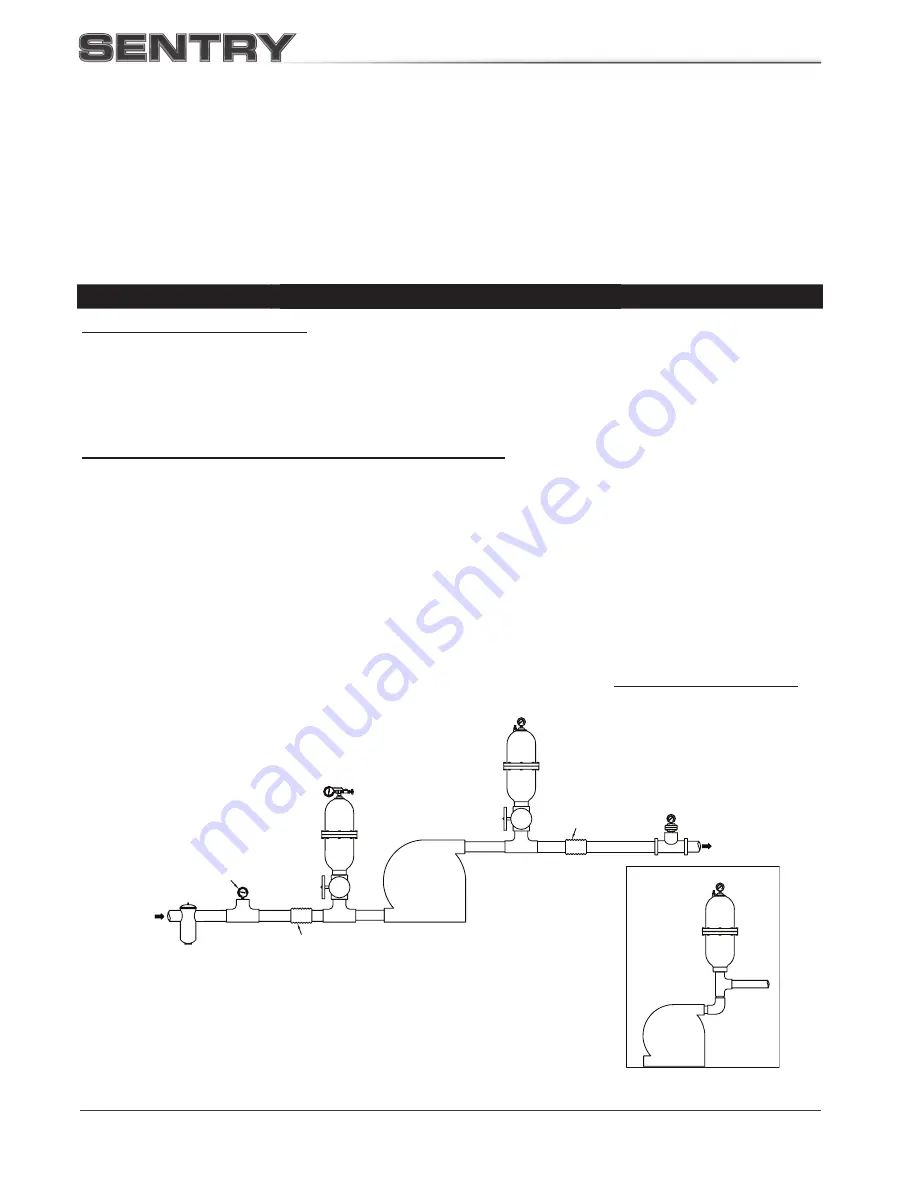
7
BLACOH F
LUID
C
ONTROL
, I
NC
.
Prior to starting the pump
, pre-charge the dampener to approximately 80% of expected system pressure and
replace fill valve cap.
DO NOT USE OXYGEN.
The pre-charge pressure in the dampener must always be lower
than pump discharge pressure. Generally, pulsation is most effectively minimized when the gas pre-charge is 80%
of system pressure. Start the pump to generate system pressure. The dampener charge pressure may need to be
adjusted up or down to be most effective in reducing pulsation.
NOTE:
The most effective method to set the
proper dampener charge is to install a pressure gauge downstream of the dampener and adjust the dampener to
minimize needle movement on the gauge.
Once system pressure is in contact with the bladder/bellows, the gas charge will be compressed to the
system pressure and the dampener gauge will read the system pressure, not the initial charge pressure.
Once working pressure is achieved, adjustment may be necessary. Gradually increase or decrease the gas
charge in the dampener by bleeding or filling through the gas valve. Allow the system to respond to each
adjustment (this may take a minute or two) before making further adjustments.
R
EAD
B
EFORE
I
NSTALLATION
I
NSTALLATION FOR
P
UMP
I
NLET
R
EAD
B
EFORE
I
NSTALLATION
Step 1 — Installation Position
Install the dampener in-line, as close to the pump inlet as possible and after any upstream equipment such as
risers, valves, elbows, meters, or filters. Dampener installation should be no more than ten pipe diameters from
pump inlet. If using a flexible connector on the inlet side of the pump between the system piping and pump, the
dampener should be installed on a tee at the pump inlet manifold. The flexible connector should be attached to
the dampener’s tee and system piping (see FIGURE 1).
A compound pressure gauge should be installed
upstream of the dampener to aid in proper dampener adjustment.
Step 2 — Charging and Start-Up (see Pre-Charge Notes)
Chargeable models do not require an air line connection. Dampener must be pre-charged with compressed air or
Nitrogen, using a hand pump, Nitrogen tank/bottle, or compressor.
DO NOT USE OXYGEN.
Charging hose kits
are available from BLACOH.
A. Suction Lift/Dampener:
When using the dampener in a suction lift application no pre-charge is required. Start
the pump to generate working pressure. As system pressure and vacuum is created, the acceleration head
created with each suction stroke will compress the air trapped in the bladder/bellows.
B. Positive Inlet Pressure:
Pre-charge the dampener with 50% of the static system pressure realized at the
pump inlet. Start the pump to generate working pressure. Minor pressure adjustments may be required. Allow
the system to respond to each adjustment (this may take a minute or two) before making further adjustments.
F
IGURE
1
PULSATION DAMPENER
PUMP
PUMP
ALTERNATE MOUNTING
METHOD
FILTER
INLET
FLEX
CONNECTOR
30"
25"
20"
30"
10"
0
20"
15"
5"
10"
Psi
INLET STABILIZER
30"
25"
20"
30"
10"
0
20"
15"
5"
10"
Ps
i
COMPOUND
PRESSURE GAUGE
ISOLATION
VALVE
BLACOH
INSTRUMENTATION
FLEX
CONNECTOR
PRESSURE GAUGE/
ISOLATION
VALVE
DISCHARGE












